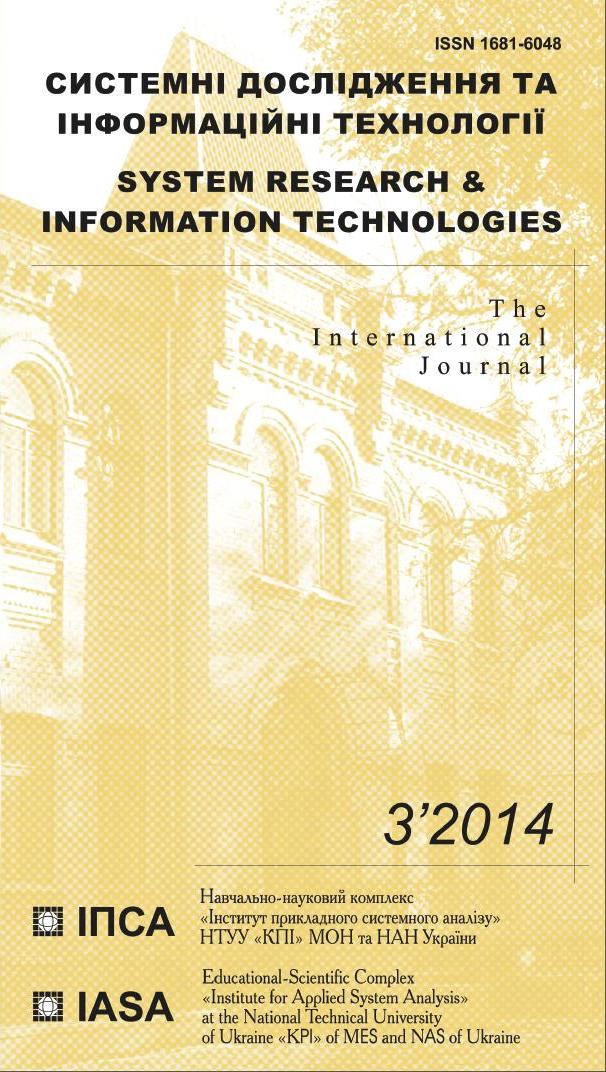Information and methodological support of a complex estimation of ecological friendliness for system objects
Abstract
The paper provides a theoretical justification of methodology for assessing the environmental performance based on MIPS- analysis and probabilistic-entropy risk analysis for solving the problems of ecological safety of territorially-site-systems, and identify factors that are responsible for the degree of manifestation of the disease and the state of human health. Research approaches to determine the relationship between the level of sustainability of the environment and human health have established the need for a universal characteristic of the heterogeneous systems' ecological quality in the form of the entropy assessment of compliance with their security requirements, or the equilibrium state. The advantages of the proposed method of environmental assessment of complex objects (natural and man-made systems) is a unique opportunity to characteristics of the components and the system as a whole, providing a comprehensive software system that produces the final result.
References
Z·hurovs'kyy M.Z. Stalyy rozvytok v hlobal'nomu i rehional'nomu vymirakh. — K.: Vyd-vo "Politekhnika", 2006. — 85 s. 2. Kachyns'kyy A.B. Systemnyy analiz vyznachennya priorytetiv v ekolohichniy bezpetsi Ukrayiny. — K.: Natsional'nyy instytut stratehichnykh doslidzhen'. — 46 s 3. Lysychenko H.V., Zabulonov Yu.L., Khmil' H.A. Pryrodnyy, tekhnohennyy ta ekolohichnyy ryzyky: analiz, otsinka, upravlinnya. — K.: Nauk. dumka, 2008. — 543 s. 4. Rittkhoff M., Ron KH., Merten T. Vychisleniya MIPS: resursnaya produktivnost’ produktsii i uslug // Osnovy teorii eko-effektivnosti: pod nauch. red. O.Sergiyenko, KH. Rona. — SPb, 2004. — S. 357–366. 5. Sergiyenko O., Ron KH. Osnovy teorii eko-effektivnosti: monografiya. — SPb.: SPbGUNiPT, 2004. — 223 s. 6. Kasimov O.M., Kozulya T.V., Yemel'yanova D.I., Kozulya M.M., Hahar V.V. Metody i model' systemy kompleksnoho otsinyuvannya ekolohichnoho stanu pryrodno-tekhnohennykh terytoriy // Ekologiya i promyshlennost’. — 2012. — № 1. — S. 21–27. 7. Prangishvili I.V. Entropiynyye i drugiye sistemnyye zakonomernosti: Voprosy upravleniya slozhnymi sistemami. — M.: Nauka, 2003. — 428 s. 8. Panchenkov А.N. Entropiya. — Nizhniy Novgorod: Intelservis, 1999. — 592 s. 9. Panchenkov А. N. Entropiya-2: KHaoticheskaya mekhanika. — Nizhniy Novgorod: Intelservis, 2002. — 713 s. 10. Kozulya T. V., Sharonova N.V. Praktychna realizatsiya kontseptsiyi korporatsiynoyi ekolohichnoyi systemy dlya intehral'noyi otsinky ekolohichnoho ryzyku zdorov"yu // Systemni doslidzhennya ta informatsiyni tekhnolohiyi. — 2010. — # 4. — S. 100–109. 11. Yerina A.M. Statystychne modelyuvannya ta prohnozuvannya: Navch. posibnyk. — K.: KNEU, 2001. — 170 s.

